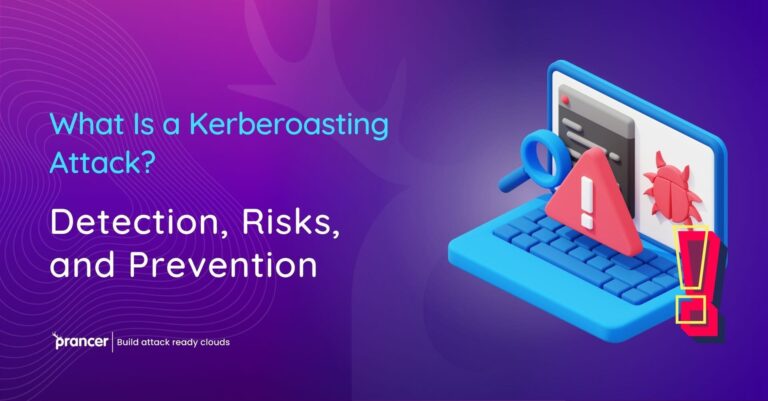

In a realm where digital interactions are ubiquitous, the surge in cyber threats and data breaches is an alarming concern. The armor against these invisible adversaries is fortified through Application Security Testing (AST), a critical endeavor that scrutinizes and augments the security fabric of your software applications. This post unfolds the quintessential five strategies to ace AST in 2023, ensuring your software’s stronghold against looming cyber threats.
The current epidemic of cyber threats and data breaches is a challenge in the era of digital interaction. Application Security Testing (AST): The New Must-Have Tool in the Battle for Software/Application Integrity. This article will reveal the top five ways to succeed in AST in 2023, focusing particularly on automated penetration testing. These will enable your program to remain impervious to the ever-changing cyber threats thereby keeping strong defense in the digital world.
AST isn’t merely a voguish acronym but a critical defense mechanism that ferrets out potential vulnerabilities, sheltering your sensitive data and ensuring a smooth operational flow of your software. For those in the cybersecurity vanguard, the significance of application security is a well-acknowledged reality in our intertwined, data-centric modern world.
SAST is your first line of defense, meticulously combing through your software’s source code during the embryonic development phase. It’s akin to a seasoned detective, spotting security loopholes like SQL injection or Cross-Site Scripting (XSS), thus affording an early warning system for developers to mend these frailties before they mature into potential threats.
DAST is the external auditor of your application security realm. It evaluates the live, operational software from an outsider’s vantage point—much like a potential attacker. DAST unveils those hidden snags like misconfigurations or weak authentication setups, which often slip past static analysis.
An astute blend of SAST and DAST, IAST monitors your software in action, dissecting its behavior to pinpoint vulnerabilities in real-time. With a knack for accurate results and a minimal penchant for false alarms, IAST is a potent asset in your security toolkit.
SCA is the vigilant gatekeeper, overseeing third-party libraries and open-source constituents in your software. Given that these external elements are often a sweet spot for attackers, keeping them updated and secure is paramount. Solutions like Prancer’s automated penetration testing, empowered by SCA, stand guard to ensure your software’s immunity against known vulnerabilities.
Simulating real-world assault scenarios on your applications, automated penetration testing delves deeper than mere vulnerability identification. It’s your mock drill for potential exploits, rendering a panoramic view of your software’s security stance. With automation as its sidekick, regular, exhaustive security evaluations are a breeze, sans draining your resources.
As a cybersecurity stalwart, selecting apt tools and allies like Prancer is vital in fortifying your software. Prancer, a revered name in the sector, extends a spectrum of AST solutions, making automated penetration testing its forte. Allying with Prancer’s expertise and cutting-edge technology, you’re always a stride ahead in the cyber battle, assuring your software and data’s sanctity.
Prancer’s automated penetration testing is a cornerstone in unearthing and mitigating application vulnerabilities. It’s your automated sleuth, providing consistent, thorough examinations to ensure no potential weak links are overlooked. This proactive modus operandi enables early detection and rectification, thwarting exploit attempts, and preserving your software’s and reputation’s integrity.
2023 should have its cyberspace threat landscape outlined with AST as the first line of defense from threats. Application Security Testing (SAST): At its infancy stage, the tool looks for flaws in source code such a search for SQL injection or XSS weaknesses. Dynamic Application Security Testing (DAST): They again move to the operational plan and touch upon mis configuration, poor authentication far. Interactive Application Security Testing (IAST): 2 That it is a combination of SAST and DAST; in other words, real-time penetration to ensure that vulnerabilities are detected at their true level. Software Composition Analysis (SCA): Ensure that third party software components are safeguarded against known threats. Automated Penetration Testing: They start effective and comprehensive security ratings by using tools such as Prancer for simulated attack. Thus, Prancer helps AST to create the full-automated testing solution that is able to identify and eliminate risks related with vulnerabilities correctly at right times preserving key security criticality aspects in software programs for responding more advanced cyber threats.
The AST approach in 2023 is an unpredictable cyber threat landscape that necessitates the need for automatic penetration testing. This in-depth analysis includes advanced AST methods, including the emergence of technologies and approaches to improve software security.
AST Strategies and Automatic Penetration Testing
Sophisticated Static Application Security Testing (SAST): The SAST tools have also advanced through the inclusion of artificial intelligence that predicts and prevents code vulnerabilities. These tools now provide more detailed information on the dangers to computer code security in early stages.
Dynamic Application Security Testing (DAST) with Real-Time Insights: In the contemporary world, DAST tools have features of live analytics that provide feedback on running apps. This quick evaluation allows a timely response to security risks and the effective mitigation of weaknesses.
Intelligent Interactive Application Security Testing (IAST): However, using machine learning in the most recent IAST tools leads to a significant reduction of false positives and improved accuracy while changing according to application behavior for better detection of vulnerabilities.
Enhanced Software Composition Analysis (SCA) with Auto-Updates: With the new SCA tools, automatic updates of third-party and open source components are provided removing vulnerabilities as well as threat level based on known security threats.
Comprehensive Automated Penetration Testing: Automated penetration testing tools mimicking sophisticated and AI-powered cyber attacks represent application security resilience in that they provide comprehensive reports illustrating various potential vulnerabilities.
AST’s improvement process includes Prancer.
All-Encompassing AST Solutions: Prancer offers a number of AST tools such as automated penetration testing solutions for application level security where vulnerability detection is guaranteed.
Seamless Integration and Tailored Testing: Prancer’s tools provided integration into development pipelines, allowing for testing solutions tailored to different applications and security needs.
Continuous Security Monitoring and Updates: The Prancer solutions are continuous application monitoring and frequent updates in line with the fast-evolving cyber threat landscape to keep them safe.
Automated penetration testing in AST
Proactive Security Measures: Preventive security is offered by automated penetration testing due to the fact that it performs timely and comprehensive evaluations, detecting weaknesses early while also providing remediation.
Efficient Resource Utilization: The automation of the testing process enables security teams to use their resources more efficiently and invest them not only in manual work but also into a strategic planning.
Scalability and Flexibility: The AST tools can be tailored to the application level and complexity of applications that are relevant in different domains for effective security testing.
Finally, in 2023 AST is significantly advanced through the latest methods and technologies such as automated penetration testing among others. The provision of complete, all-encompassing and anticipatory security testing is essential to the protection of software applications from the complex and diverse cyber threat environment that defines contemporary information society; this explains why solutions such as Prancer’s are required.
Conclusion:
As we venture into 2023, staying abreast with the crème de la crème of AST methodologies is pivotal. A robust AST blueprint, coupled with adept tools like Prancer and a proclivity towards automated penetration testing, is your formula for a fortress-like application security. As the cyber realm continually morphs, fortifying your software against potential onslaughts is your ticket to safeguarding both your data and reputation.
